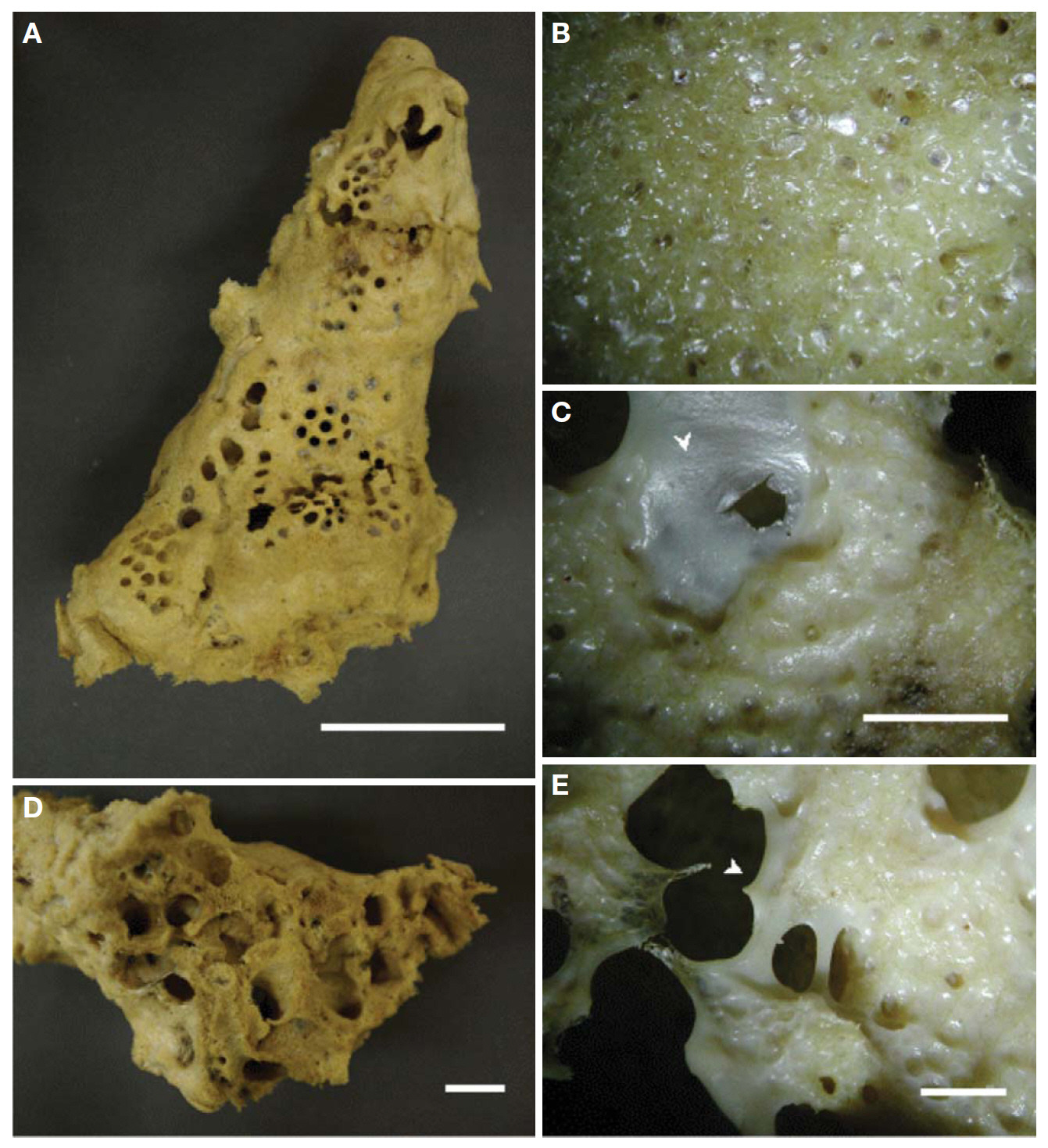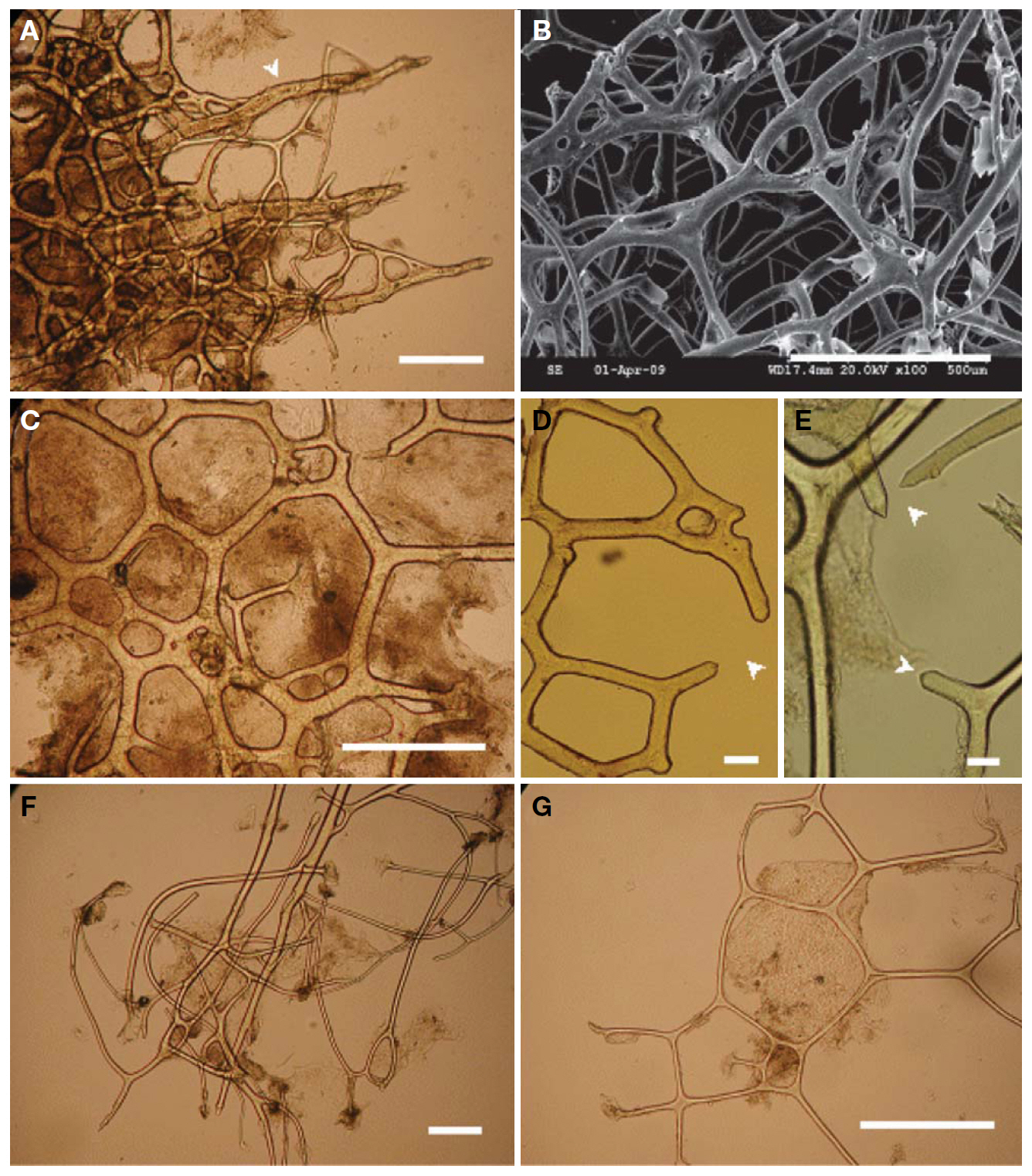



Sponges of the family Spongiidae are poorly known in Korean waters. This paper describes Hippospongia bergquistia n. sp. of the family Spongiidae (Demospongiae: Dictyoceratida) collected from Moselpo, Jejudo Island, Korea in 2007. This new species has a cavernous construction, rare pseudo-tertiary fibre, and rare primary fibres.
The family Spongiidae consists of six valid genera;
Phylum Porifera Grant, 1836
Class Demospongiae Sollas, 1885
Order Dictyoceratida Minchin, 1900
Family Spongiidae Gray, 1867
1*
Holotype (Por. 105), Moselpo (Unjin Harbor), Jejudo Island, 28 Sep 2007, Mun SE, by SCUBA diving at 20-30 m in depth (HUNHM). Paratype (Por. 105-1), collected with Holotype (HUNHM).
Upright with sub-cylindrical cavernous body. Size up to 8×13 cm high and 2-5 mm thick. Surface smooth and covered with thin transparent membrane pierced by numerous large and small pores. Top of body narrower than lower part. Numerous pores of variable diameter arranged in groups of 8-15. Texture, elastic but easily torn. Colour, ivory and pale purple in life. Large lacunae well developed through whole body.
Cored primary fibres, 30-60 ㎛ in diameter, near surface but very simple and rare. Uncored secondary fibres, 20-60 ㎛ in diameter, mainly forming polygonal mesh, 160-520 ㎛ in diameter, just under sponge surface. Inside choanosome, irregular skeletal mesh. Pseudo-tertiary fibres, 8-12 ㎛ in diameter, restricted to sponge base near primary fibres.
This species is named for the late Dr. Patricia Bergquist, former professor at the University of Auckland, Auckland, New Zealand.
This new species is distinguished from other hippospongian species by pseudo-tertiary fibres in the sponge
base part.
new species (Duchassaing de Fonbressin and Michelotti, 1864; van Soest, 1978). Fibres of
Korean name: 1*버키스트히포스폰지해면 (신칭)

